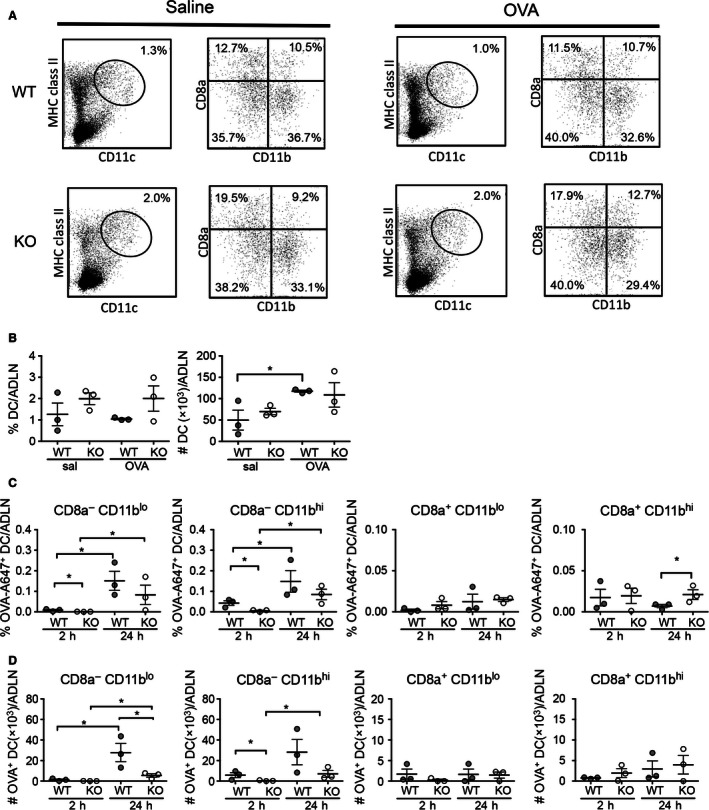Figure 5.

Traffic of inhaled antigen to airway draining lymph nodes in OVA‐sensitized BALB/c WT and CD103‐/‐ mice. Adult BALB/c WT and CD103 KO mice were sensitized with OVA in alum i.p. on days 0 and 14, and on day 21 were challenged with 50 μg OVA‐A647 in 50 μL saline p.n. Airway draining lymph nodes (ADLN) were then harvested at 2 h and 24 h post challenge and DC analyzed by flow cytometry as described for Figure 2, including labeling for CD8α ‐ migratory and CD8α + resident DC, along with assessment of percentages and numbers of DC containing OVA‐A647. (A) Gating strategy for identification of ADLN DC populations by FACS in saline and OVA‐challenged WT and CD103 KO mice. DC were identified as I–A/Ehi CD11chi cells (left panels), and then subsequently gated for expression of CD8α and CD11b (right panels). (B) Total DC percentages and numbers per ADLN in WT and CD103 KO mice post saline‐ and OVA‐challenge. (C) Percentages of CD8α ‐CD11blo, CD8α ‐CD11bhi, CD8α +CD11blo, CD8α +CD11bhi ADLN DC subpopulations positive for OVA‐Alexa 647, presented as mean percentage frequency +/− SEM of total cells in ADLN (n = 5 mice/group with pooled samples, for three independent experiments) (D) Total numbers of CD8α ‐CD11blo, CD8α ‐CD11bhi, CD8α +CD11blo, CD8α +CD11bhi ADLN DC subpopulations positive for OVA‐Alexa 647, presented as mean total number positive cells +/− SEM per ADLN (n = 5 mice/group with pooled samples, for three independent experiments). *P < 0.05 by one‐tailed Mann–Whitney U‐Test. WT, wild type; KO, knockout; OVA, ovalbumin.
